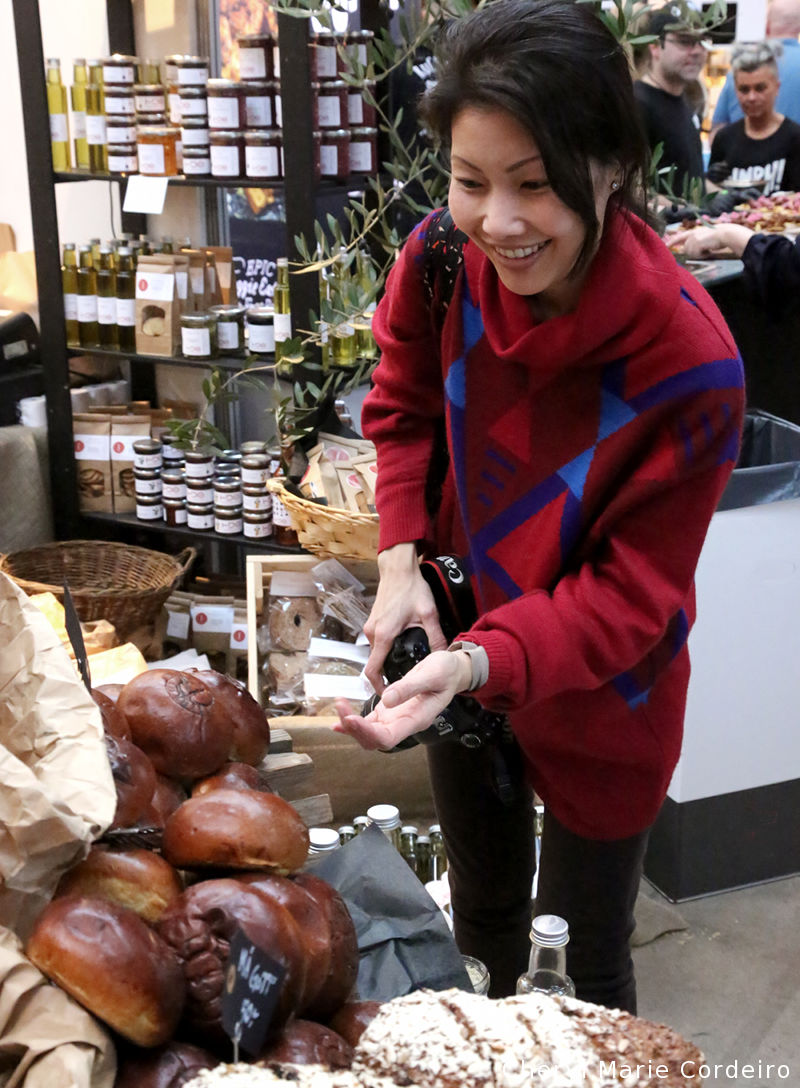Highlights from Passion för Mat 2017, Gothenburg, Sweden. At the Höganäs Saluhall exhibit stall who have travelled from Mölle, Sweden to be at this Gothenburg tradefair.
Text & Photo © JE Nilsson, CM Cordeiro 2017
Gothenburg’s annual culinary fair (24-26 Feb. 2017) is one of my absolute trade fairs to visit, not only because the trade fair grounds at Eriksbergshallen provides a meeting place for the small network of culinary experts that I have gotten to know over the years, but it provides a fantastic opportunity to meet with new traders with new expertise and experiences to share. The fair’s Kitchen School that informs the public on food processes, best recipes and best methods of cooking was progressing at full speed when we arrived on scene, where the crowd looked genuinely interested and enthusiastic. Making our rounds, this post brings you some pictures and highlights of Passion för Mat 2017.
Kullans Lycka
The lady behind Kullans Lucka is Agnetha Björnsdotter Berglund. The first sheep came into her life about twelve years ago, when she made a conscious decision to leave a hectic city life and to begin farming. Agneta’s life’s work philosophy and practices follow some of the most ancient Nordic traditions on how to take care of animals through the circle of seasons. She has a flock of about 35 sheep of her own whom she can identify by name by its distant bleat in the open fields. Her sheep roam free throughout the year apart from lambing season that comes early in the year. The sheep are trimmed twice a year of their wool, for which wool products are handcrafted to either a custom design or designs handed down from generations before her. And during slaughter season come end of year, she works in a collective effort of small farms around Lidköping in order to produce local meat, charcuterie as well as sheepskins for trade and for keeping the farm in yet another cycle of the year to come.
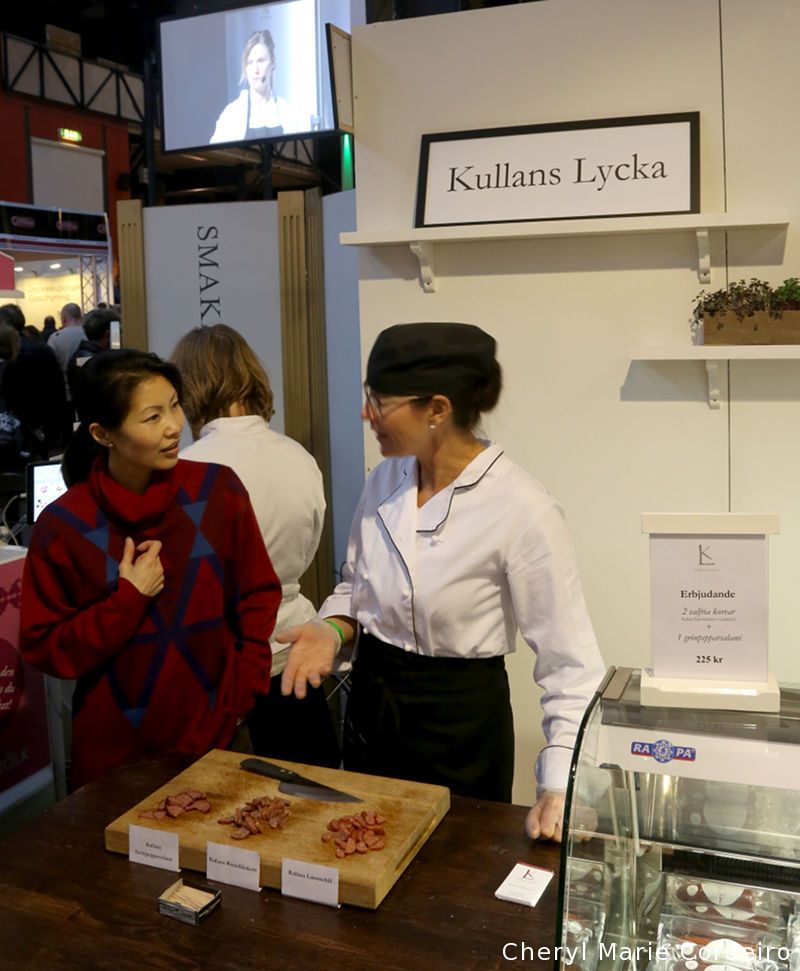
Speaking with Agnetha Björnsdotter Berglund of Kullans Lycka.

Matvägen Bohuslän
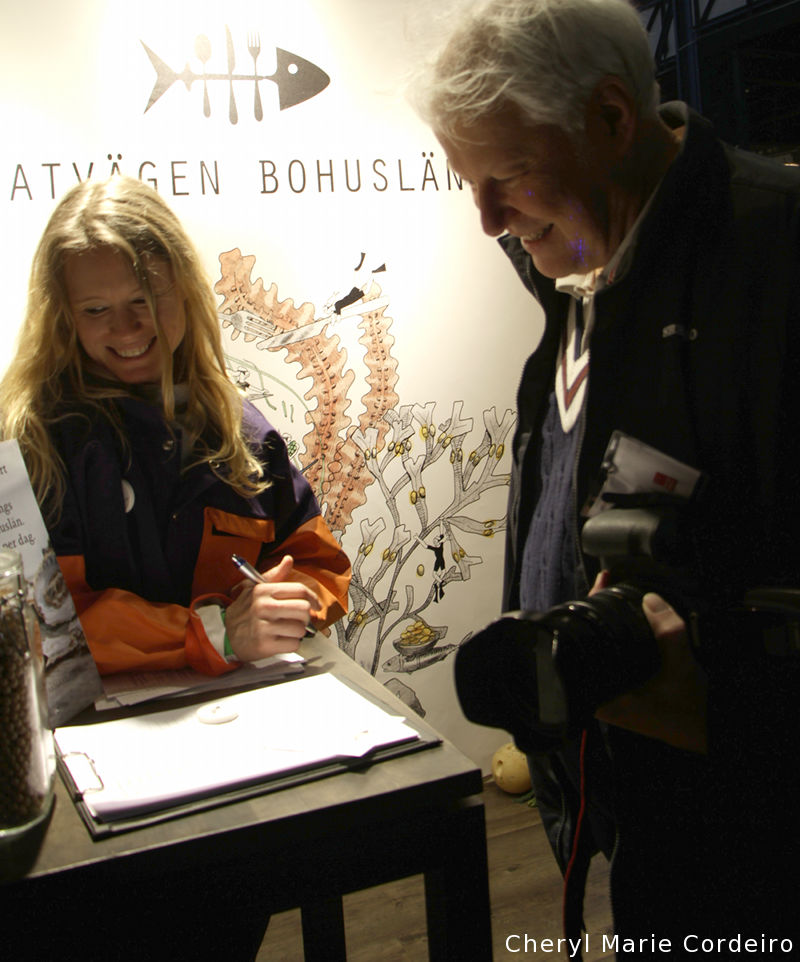
Matvägen Bohuslän is an eco-tourism initiative by South Bohuslän Turism AB, Sweden. The concept was developed years ago with the intent of putting potential project partners in touch with each other in a coordinated effort to share the experience of the region with both locals and foreigners. Their goal is to illustrate how people can create sustainable relationships with the land in which they live and harvest. We are not outside of the environment needing to exert excessive control of it, but rather, we are all biological organisms that live in symbiosis with the land, with other animals. This project aims to develop Bohuslän as a world class culinary destination, where information and knowledge sharing to the Swedish west coast, its lifestyle and living philosophy makes a key part of the experience.
Evert’s Sjöbod Grebbestad, Bohuslän

Evert’s Sjöbod, part of the eco-tourism scene in Grebbestad, Bohuslän, here at the food fair, illustrating how to shuck the perfect oyster. Grebbestad is where 90% of Swedish oysters are harvested, and where about half of all Swedish lobsters are brought up from sea to tables in the country.
Fancy a lobster or an oyster safari? Or how about a warm bath in the cool waters off the Swedish west coast archipelago beyond the summer season? Evert’s Sjöbod is an eco-tourism company that brings you the experience and taste of the Swedish west coast. Run by two brothers who grew up in Grebbestad, they arrange for exclusive experiences of the taste (of oysters, crabs, lobsters and shrimp) and feel of the beautiful archipelago in Bohuslän, Sweden.
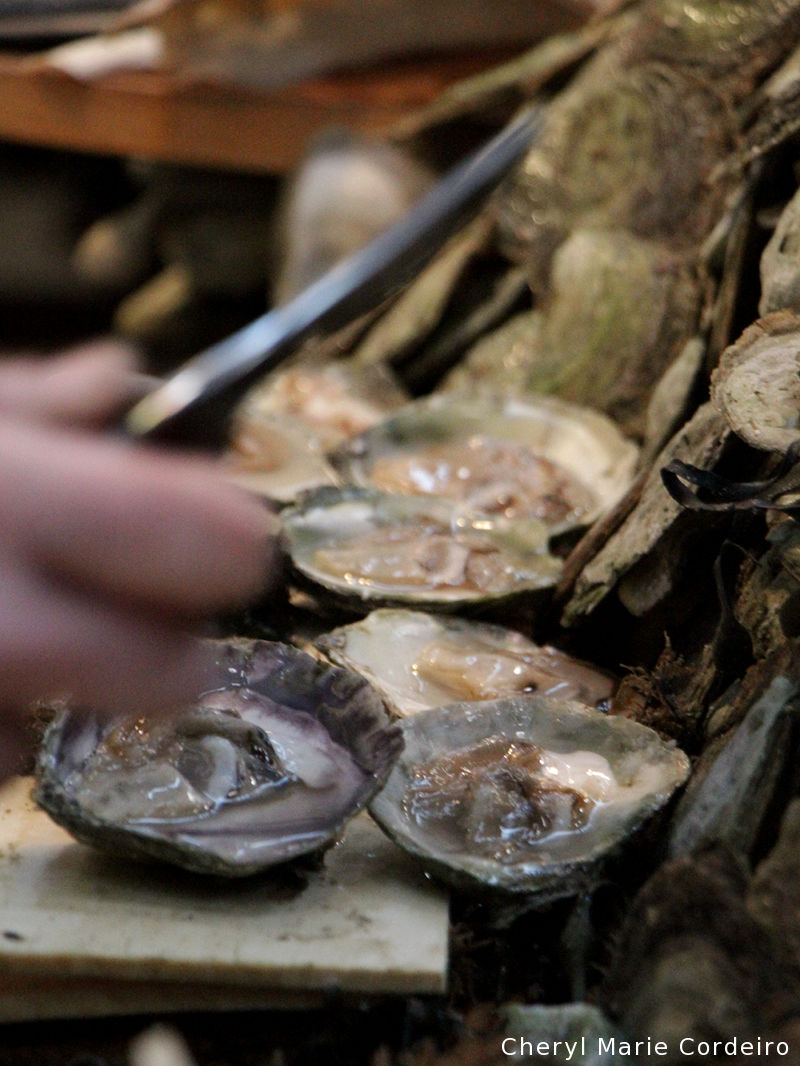
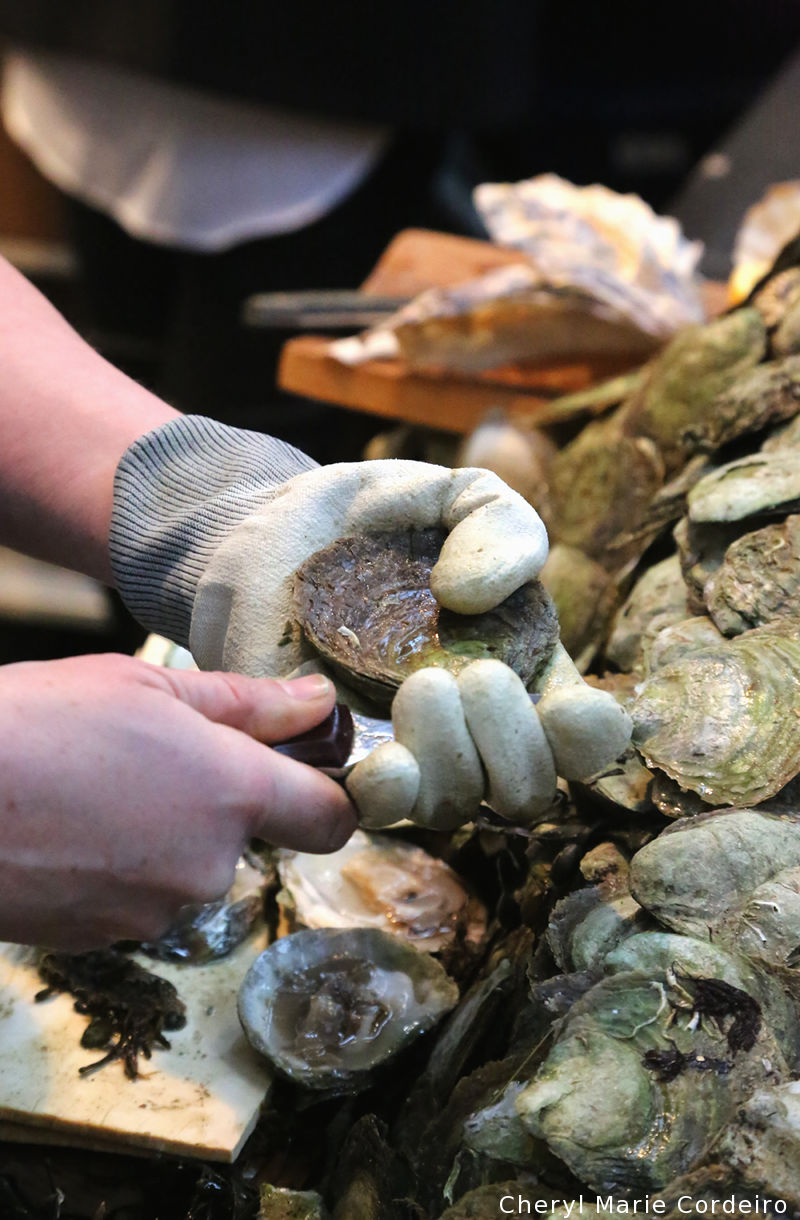
Ostbutiken / Hotell Dahlia, växthotell & marmeladeri
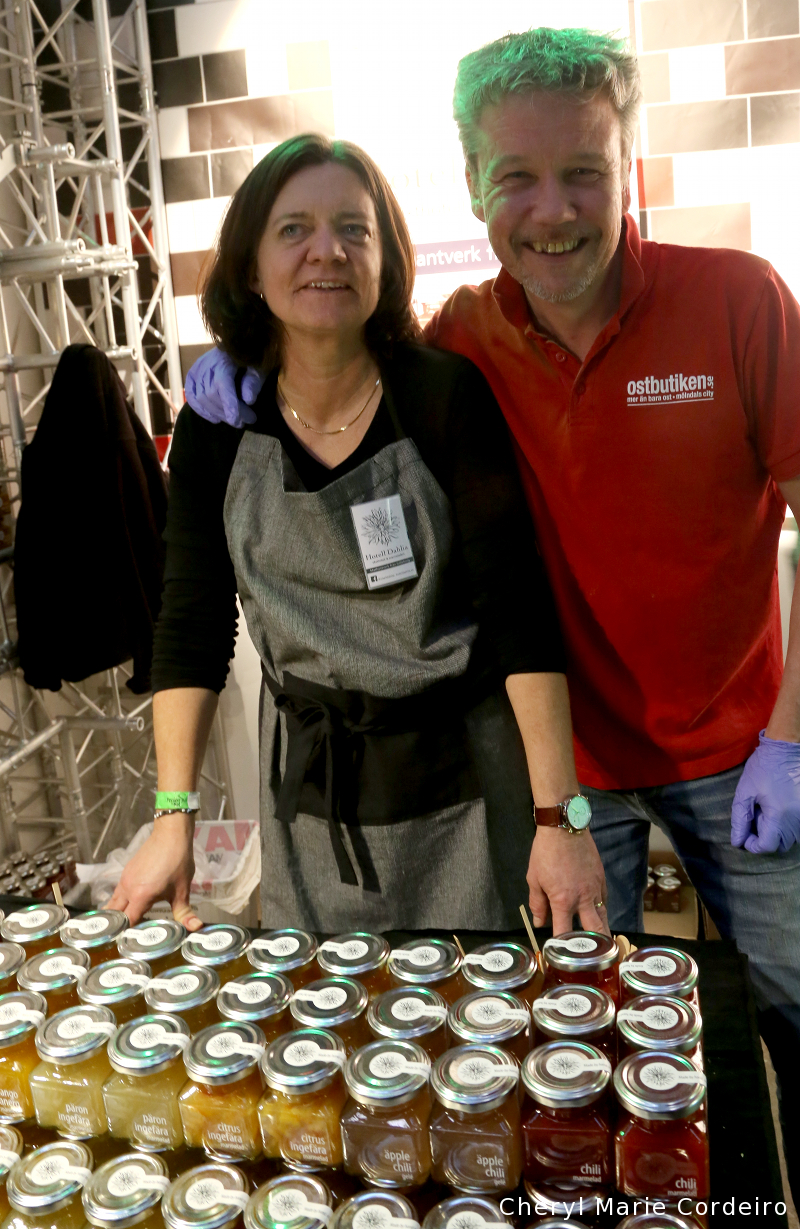
Kenneth Torstensson of Ostbutiken, sharing some exhibition space and excellent marmalades from Hotell Dahlia.
Hotell Dahlia is a plant hotel where you can check-in your fruit trees and greens over winter and come pick them up when the warmth arrives in early spring. The idea began with housing Mediterranean plants such as citrus and olive trees, but the Nordic winters perhaps played a vital role in pushing a momentum for the plant hotel. Today, the hotel not only houses different plants, trees and greens, but they also conduct custom courses and theme evenings on request. Marmalades are produced by the hotel from raw produce sourced from around Gothenburg. I absolutely love that their array of fantastic marmalades.
Hotell Dahlia, “Simply a place to grow”. It couldn’t be sweeter phrased than that.
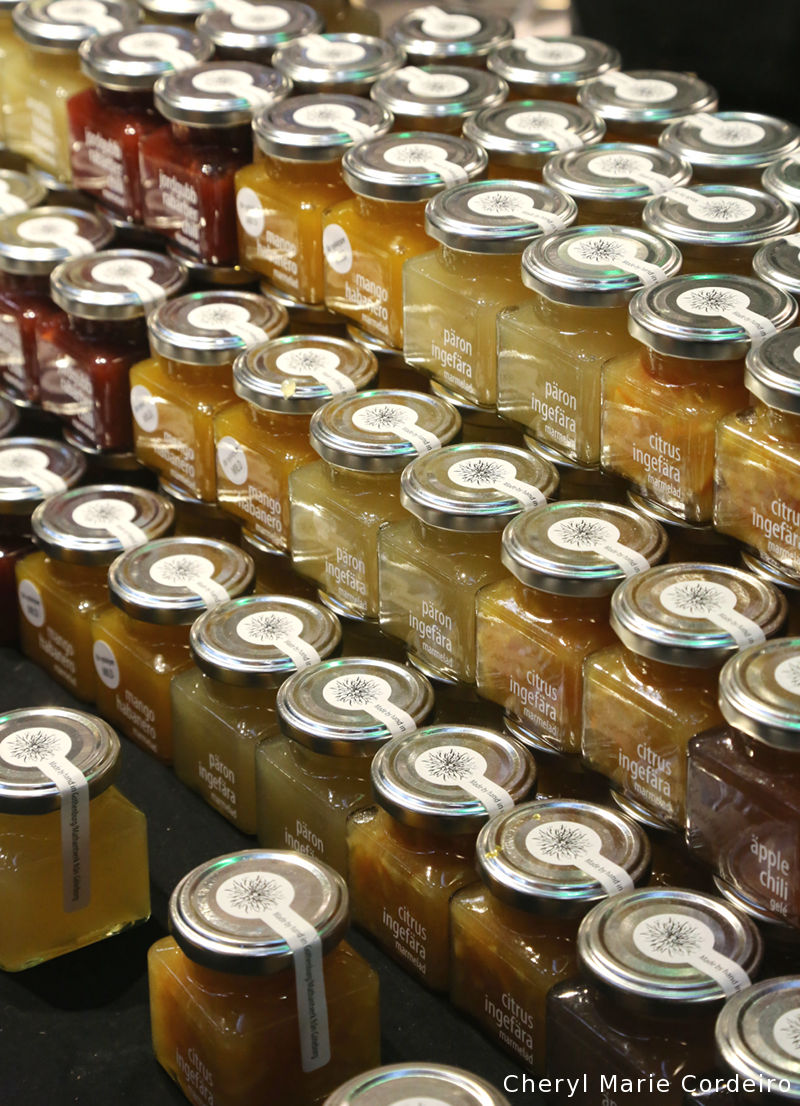
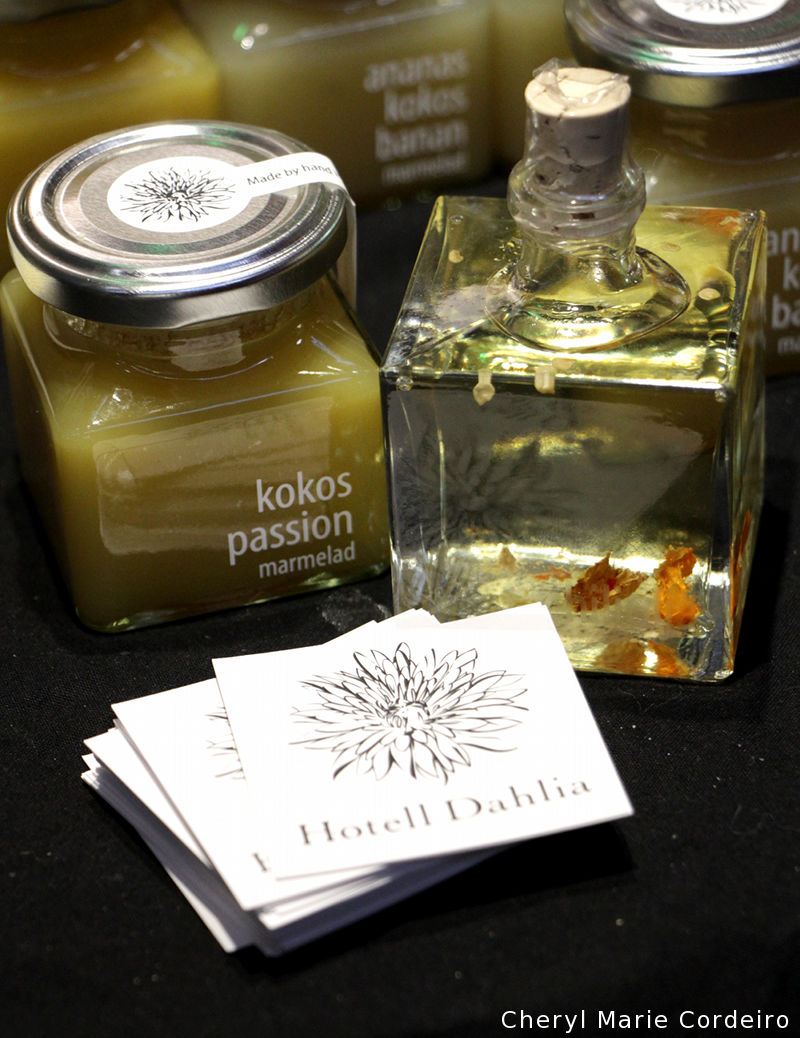
Too pretty for immediate consumption. This clear chilli oil (pictured right) is one of my favourite bottled products to bring home.
CC´s havtornsdelikatesser

Along a little croft ridge in Äspered, Vastergotland, Christer and Camilla Bergsten grow sea buckthorn. About 2,000 species of them:
Sea buckthorn (SB) (Hippophae rhamnoides) is a temperate, thorny, nitrogen fixing, and deciduous shrub grows in Central Asia and Europe. This plant has a long history of applications in Tibetan, Mongolian, and Ayurveda systems of medicines. A wide spectrum of physiological activities including antioxidant (Fan and others 2007), cytoprotective, immunomodulatory (Geetha and others 2002), and cardioprotective (Johansson and others 2000) efficacies are attributed to SB berries. SB berries consists of a fairly tough skin and juicy pulp enveloping a small and hard, oval seed. SB berries are excellent source of bioactive phytochemicals such as carotenoids, tocopherols, sterols, vitamin C, organic acids, and polyphenols (Arimboor and others 2006; Ranjith and others 2006). A wide array of phenolic compounds coming under the classes of flavanols, flavones, phenolic acids, and tannins are reported in SB berries and leaves (Rosch and others 2004a, 2004b; Arimboor and others 2006, 2008; Fan and others 2007). Some low molecular weight proanthocyanidins (PA) with significant antioxidant efficacies are reported in SB berries (Rosch and others 2004a, 2004b; Fan and others 2007).”[1]
Their brand stands for locally, organically grown sea buckthorn and its various products. They love their product, and that is illustrated in the variegated orange-hues from creamy to refreshing, lining their exhibition stall at the fair. Beaming and with a broad smile, we were informed that the berries are handpicked with great care during harvest season every year in order to keep the quality of the products high.
And Swedish passion for the making of their product has been noticed. Already in 2002, Lisa Förare Winbladh ardently wrote of the berries of Sweden, “And the berries! The sea buckthorn with its alluring aroma reminiscent of mango and passion fruit; the unbelievably fragrant arctic raspberry, with a sweet fragrance that defies description; the musky lingonberry and cloudberry. These genuine, native products are now found in newly important dishes, such as panna cottas, crème brulées, chiboustes, granites and smooth sorbets.” [2]
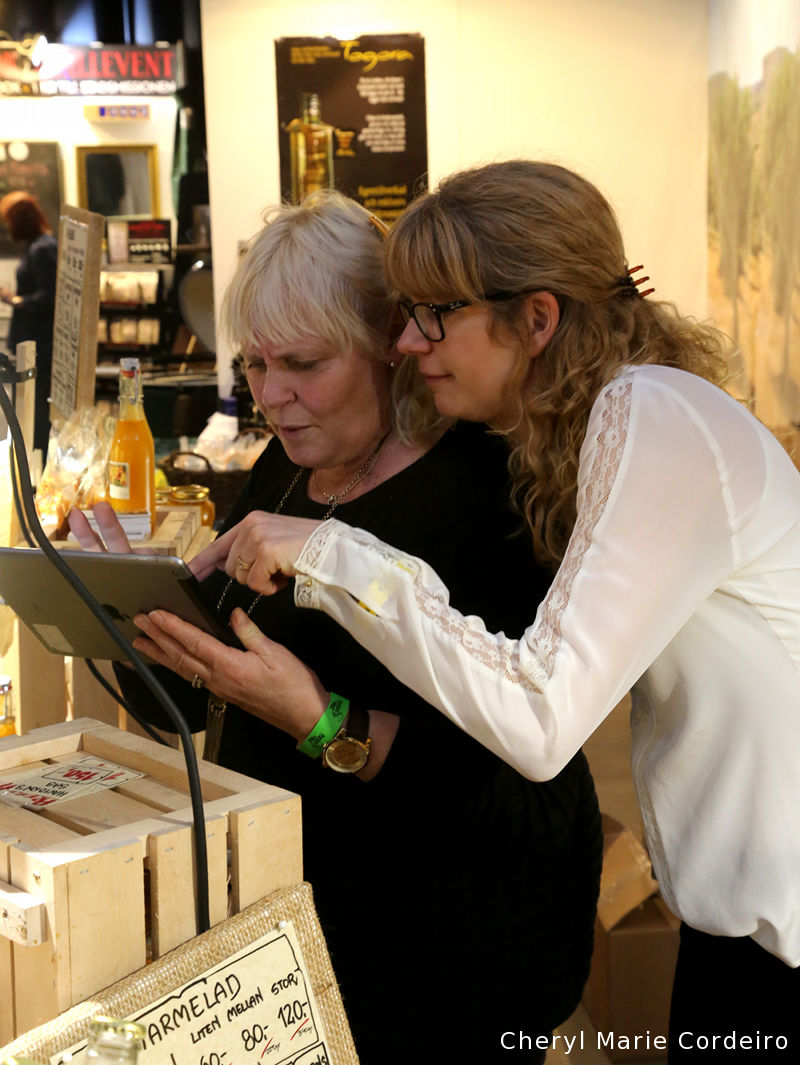
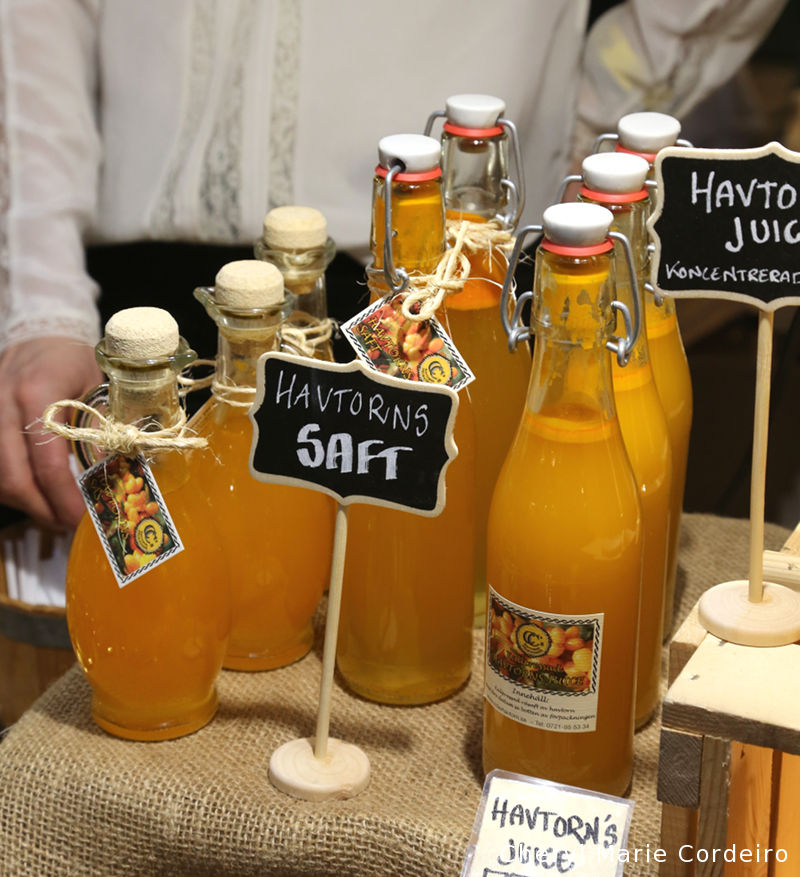
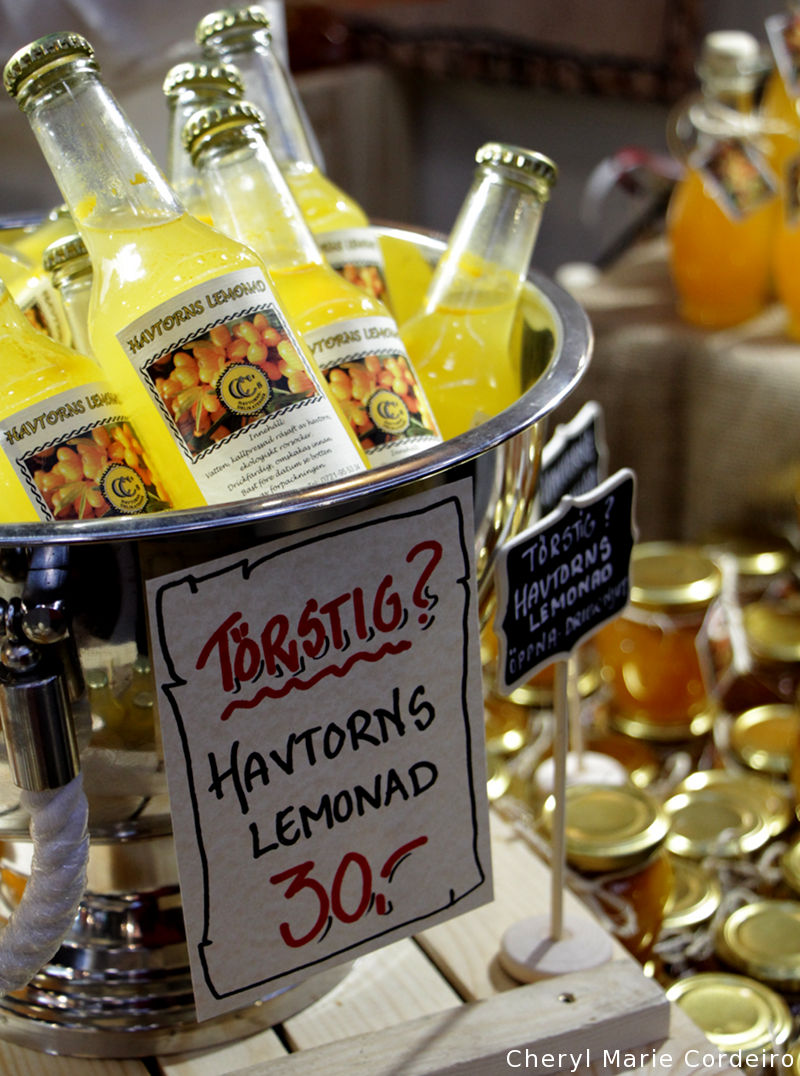
Thirsty? Absolutely.
Höganäs Saluhall, Mölle, Sweden
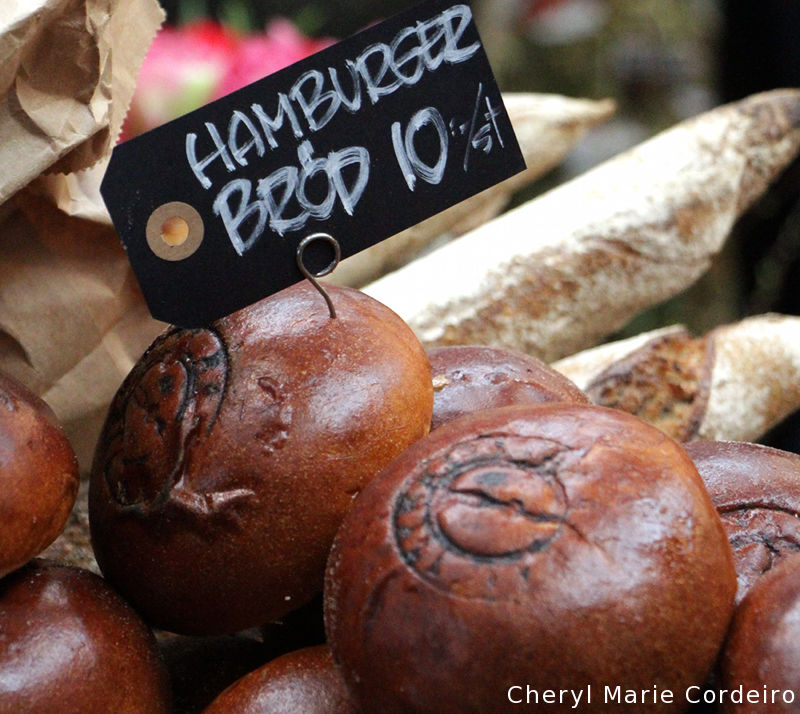
Beautiful! This particular shade of earthen hue to a hamburger bun takes Höganäs branding to a whole new level.
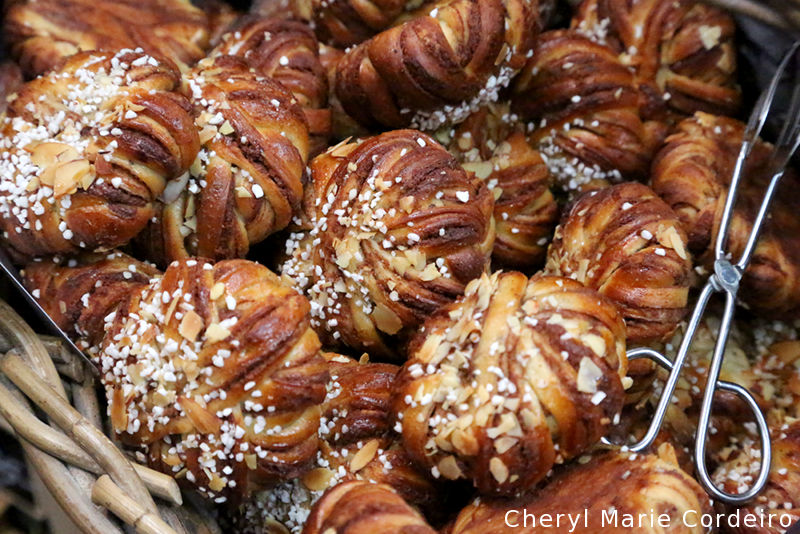
A food hall within a food hall. Beautiful breads and flowers from a wonderful visitor, Höganäs Saluhall in Mölle, Sweden. Mölle in south Sweden is one of the more scenic seaside towns to visit during the summer months.
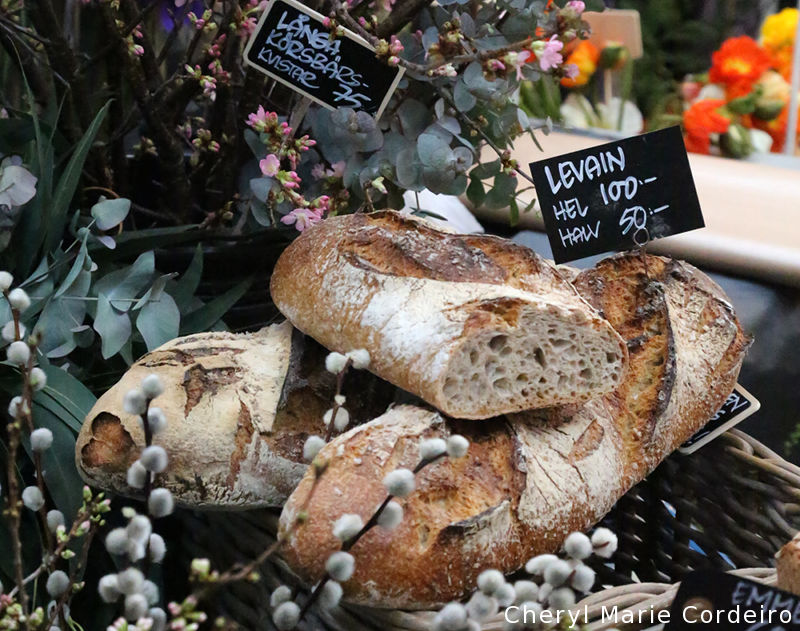
References
[1] Arimboor, R., & Arumughan, C. (2011). Sea Buckthorn (Hippophae rhamnoides) Proanthocyanidins Inhibit In Vitro Enzymatic Hydrolysis of Protein. Journal of Food Science, 76(6), T130-T137, p.130.
[2] Winbladh, L. F. (2002). Cuisine with a Conscience. Gastronomica, 2(2), 87-90, p.90.
